Suji Kim
Efficient Neural Video Representation with Temporally Coherent Modulation
May 01, 2025Abstract:Implicit neural representations (INR) has found successful applications across diverse domains. To employ INR in real-life, it is important to speed up training. In the field of INR for video applications, the state-of-the-art approach employs grid-type parametric encoding and successfully achieves a faster encoding speed in comparison to its predecessors. However, the grid usage, which does not consider the video's dynamic nature, leads to redundant use of trainable parameters. As a result, it has significantly lower parameter efficiency and higher bitrate compared to NeRV-style methods that do not use a parametric encoding. To address the problem, we propose Neural Video representation with Temporally coherent Modulation (NVTM), a novel framework that can capture dynamic characteristics of video. By decomposing the spatio-temporal 3D video data into a set of 2D grids with flow information, NVTM enables learning video representation rapidly and uses parameter efficiently. Our framework enables to process temporally corresponding pixels at once, resulting in the fastest encoding speed for a reasonable video quality, especially when compared to the NeRV-style method, with a speed increase of over 3 times. Also, it remarks an average of 1.54dB/0.019 improvements in PSNR/LPIPS on UVG (Dynamic) (even with 10% fewer parameters) and an average of 1.84dB/0.013 improvements in PSNR/LPIPS on MCL-JCV (Dynamic), compared to previous grid-type works. By expanding this to compression tasks, we demonstrate comparable performance to video compression standards (H.264, HEVC) and recent INR approaches for video compression. Additionally, we perform extensive experiments demonstrating the superior performance of our algorithm across diverse tasks, encompassing super resolution, frame interpolation and video inpainting. Project page is https://sujiikim.github.io/NVTM/.
Multiple Areal Feature Aware Transportation Demand Prediction
Aug 23, 2024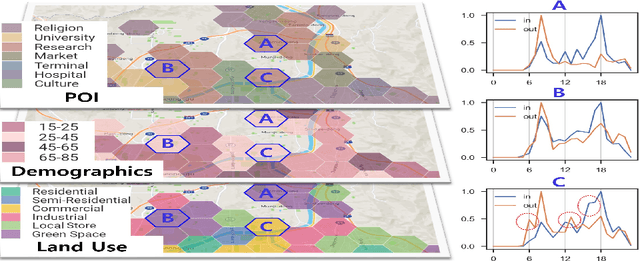
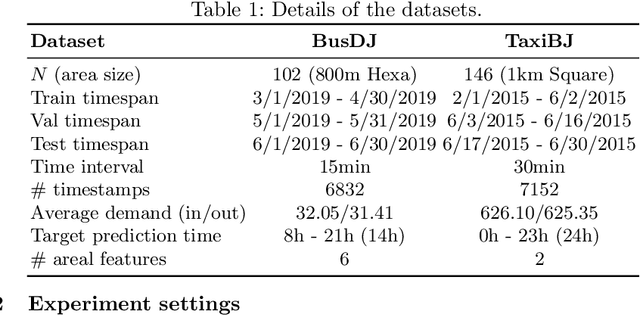
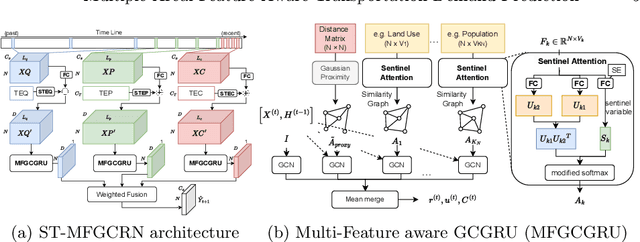
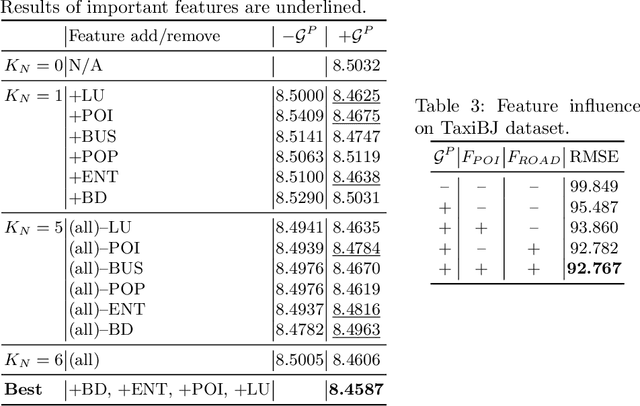
Abstract:A reliable short-term transportation demand prediction supports the authorities in improving the capability of systems by optimizing schedules, adjusting fleet sizes, and generating new transit networks. A handful of research efforts incorporate one or a few areal features while learning spatio-temporal correlation, to capture similar demand patterns between similar areas. However, urban characteristics are polymorphic, and they need to be understood by multiple areal features such as land use, sociodemographics, and place-of-interest (POI) distribution. In this paper, we propose a novel spatio-temporal multi-feature-aware graph convolutional recurrent network (ST-MFGCRN) that fuses multiple areal features during spatio-temproal understanding. Inside ST-MFGCRN, we devise sentinel attention to calculate the areal similarity matrix by allowing each area to take partial attention if the feature is not useful. We evaluate the proposed model on two real-world transportation datasets, one with our constructed BusDJ dataset and one with benchmark TaxiBJ. Results show that our model outperforms the state-of-the-art baselines up to 7\% on BusDJ and 8\% on TaxiBJ dataset.
ForecastQA: Machine Comprehension of Temporal Text for Answering Forecasting Questions
May 02, 2020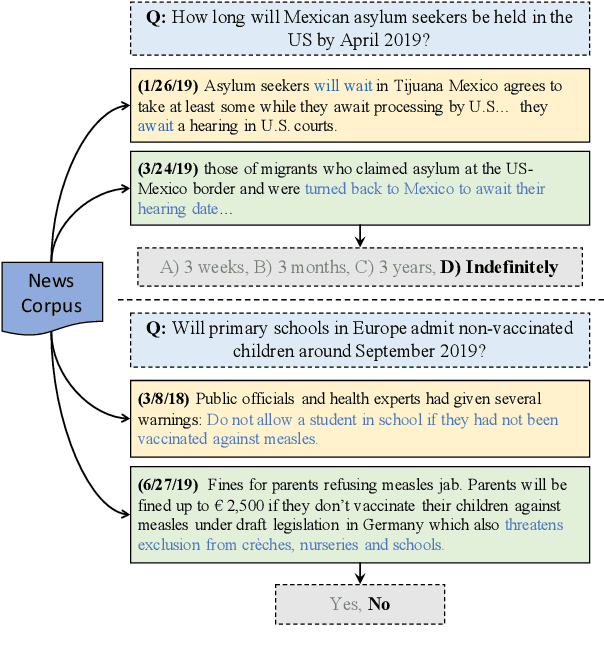


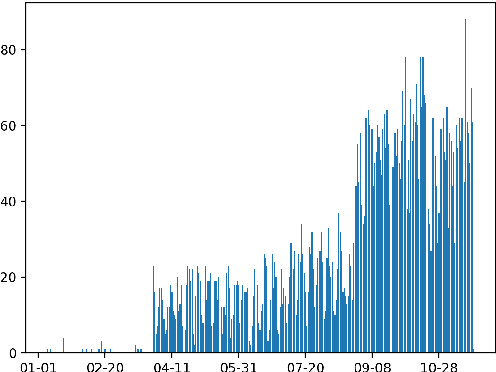
Abstract:Textual data are often accompanied by time information (e.g., dates in news articles), but the information is easily overlooked on existing question answering datasets. In this paper, we introduce ForecastQA, a new open-domain question answering dataset consisting of 10k questions which requires temporal reasoning. ForecastQA is collected via a crowdsourcing effort based on news articles, where workers were asked to come up with yes-no or multiple-choice questions. We also present baseline models for our dataset, which is based on a pre-trained language model. In our study, our baseline model achieves 61.6% accuracy on the ForecastQA dataset. We expect that our new data will support future research efforts. Our data and code are publicly available at https://inklab.usc.edu/ForecastQA/.
 Add to Chrome
Add to Chrome Add to Firefox
Add to Firefox Add to Edge
Add to Edge